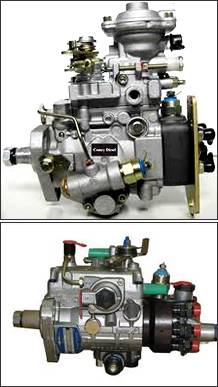



I am often asked for advice on the strategic choices of small and midsize manufacturers. As an advisor to business, I study to understand what we can learn from the past, and recognize the signs of change for the future. Learn from past mistakes to avoid future mistakes.
In this article, I want to describe three choices that a US factory faced 30 years ago. We will learn from history, and get a lesson along the way. I hope this story will help you make your own strategic choices.
Imagine the owner of a textile mill in the US 30 years ago, in 1983. Let us say the factory is in the state of North Carolina (I will use textiles in North Carolina as my example. If your business is in something else, think of your own industry as you read on. You can picture this factory owner making electronics in New Jersey, or metal hardware in Ohio, or plastics in California. The same story has happened again and again.).
It is 1983 in the US, and business is good. North America and Western Europe have just come out of a dangerous recession and the economy is improving nicely. The factory owner has heard that a new leader in China (Deng Xiaoping) is encouraging economic reforms that will open up China to the world economy. Perhaps the tide is changing. Should the owner make any change to his business strategy?
Looking back now, we can say that of course the answer is yes. Thirty years ago China brought the entire world into a new era of global productivity. Before the 1980s we could only guess what kind of manufacturing muscle was under the dragon’s skin. Now we know.
Many factories in China today face these same threats. The world continues to change, and China is no longer the sure place to start a low-cost business. Once again, factory owners are asking – is it time to make a change to the strategy?
Our US factory owner in 1983 soon discovered that his business was changing right beneath him. He had three choices for his response. These are the same three choices faced by many China factories today:
1. Win the competition because of your low hourly labor costs.
To keep costs down, the factory owner could move his factory out of the US. He might move to China, and many did. This strategy can work, temporarily, but sooner or later this strategy will require another move. Eventually someone, somewhere will work for even less. The personal sacrifice of moving the factory out of the community might be substantial as well.
2. Win the competition because of friendly regulations.
The North Carolina factory owner could go to the government for protection. He can seek special rules or taxes that will make business difficult for foreign competitors. He can look for government-sponsored subsidies in bank loans. The owner will try to use pressure on everyone in the supply base to stay local, because as soon as one part of the supply base begins going to China, the entire industry might move there eventually.
3. Win the competition because of your lean efficiency and quality.
Some factories in the US faced low-cost foreign competition head-on and still did very well. Some factories did not move, and some factories did not run to the government for safety. North Carolina still has a textile industry. New Jersey still has electronics. Metal hardware and plastic are still made in Ohio and California.
How did this last group of US companies survive and thrive in the new business world? Perhaps you think the answer is simply that they replaced high-cost workers with automated machinery. No, that is not correct. These companies learned new ways to think about efficiency and quality. Manufacturing processes that operate in flow, not batch. Instead of quality ensured by redundant inspections, they discovered how to build quality assurance into the flow of the process.
The effort required by these successful companies was enormous, and required great humility. The owners and managers found that they had to adopt cooperative and collaborative approaches for dealing with workers and with suppliers. They had to throw aside activities that were merely done “good enough” so they could focus on the activities in which they excelled.
These companies can now produce at a lower cost than anyone. They are not afraid of any competitors. The owners and managers were able to stay in the towns where they wanted to live, and they have great honor in their communities.
If you have a manufacturing business in China, I see these same three choices you can make. You can focus on your labor costs, you can focus on getting government-sponsored help, or you can learn new concepts of efficiency and quality.
Here are three things for you to know about the methods you can learn from the last group of companies I described, if you want to consider the approach:
1. These methods will improve your cash flow and reduce your needs for capital. That is why they were invented.
2. These methods require humility from owners and managers.
3. These methods require a commitment to constant study and improvement.
When you go fishing by the ocean shore, you should pay attention to the changing of the tides. When the tide turns, you need to change the way you fish. I see that the tide is turning. Change now or get left behind. Make your choice, stick to it, and gather around your good advisors who can help you stay on your chosen way.
 33060302000733
33060302000733